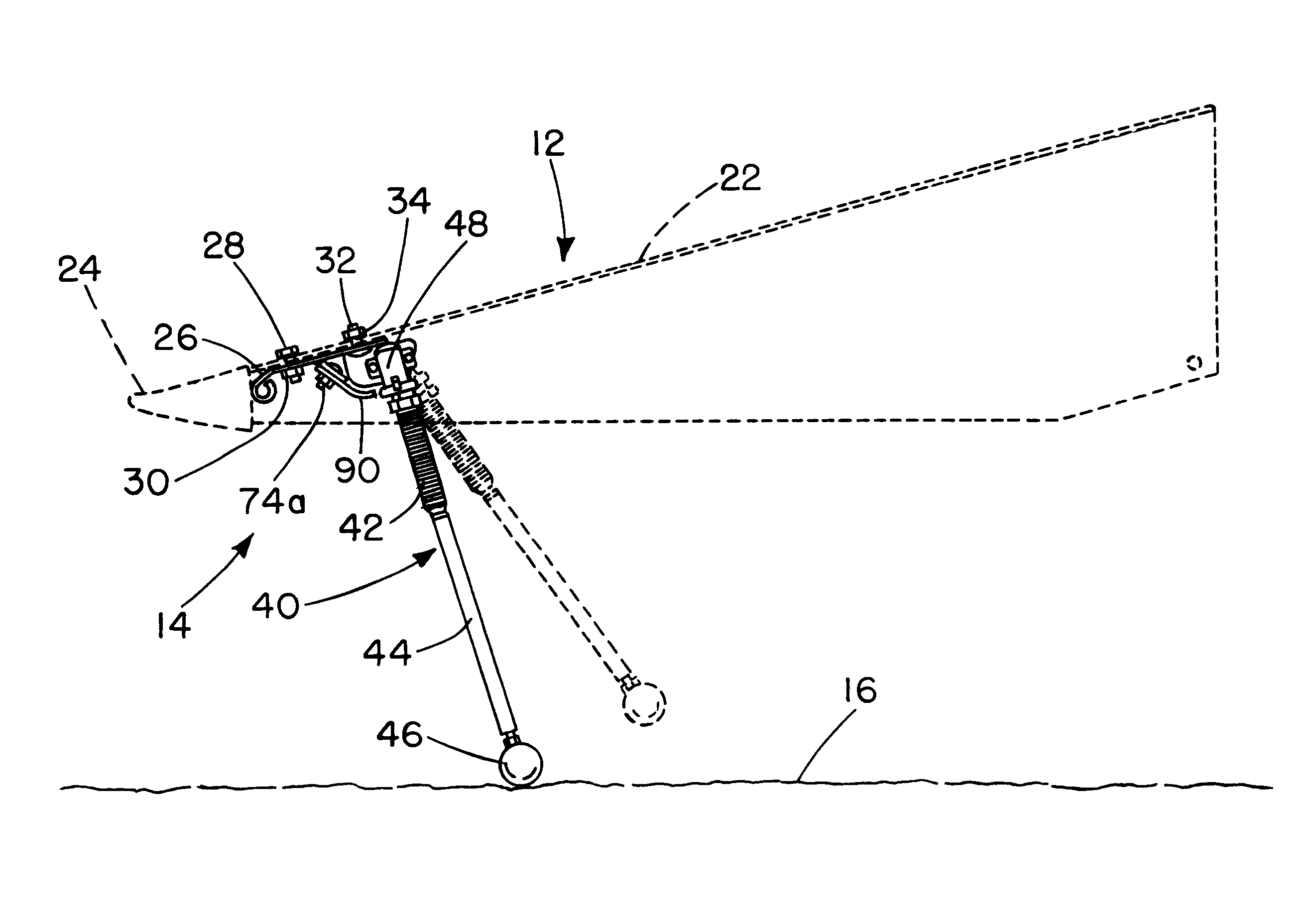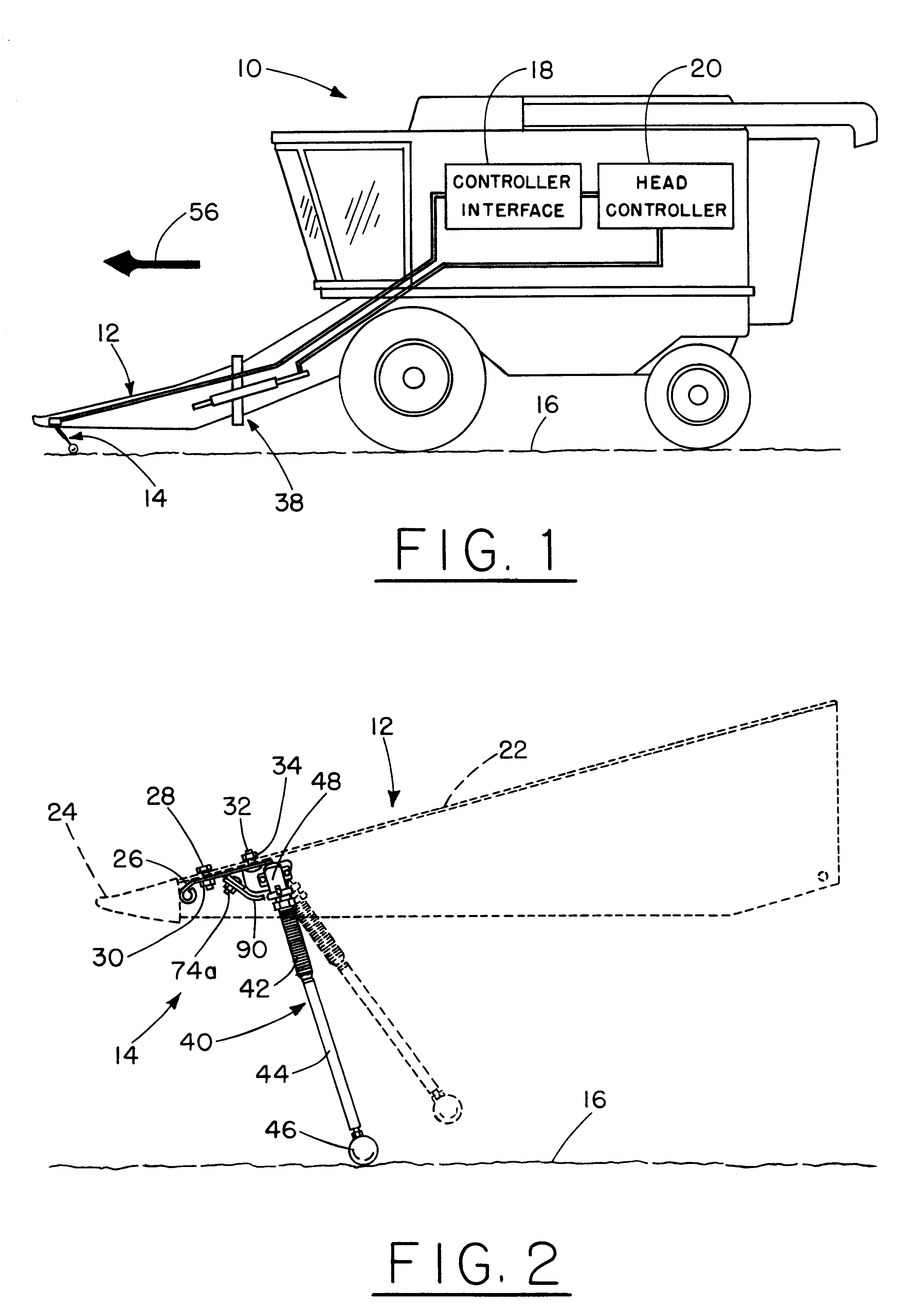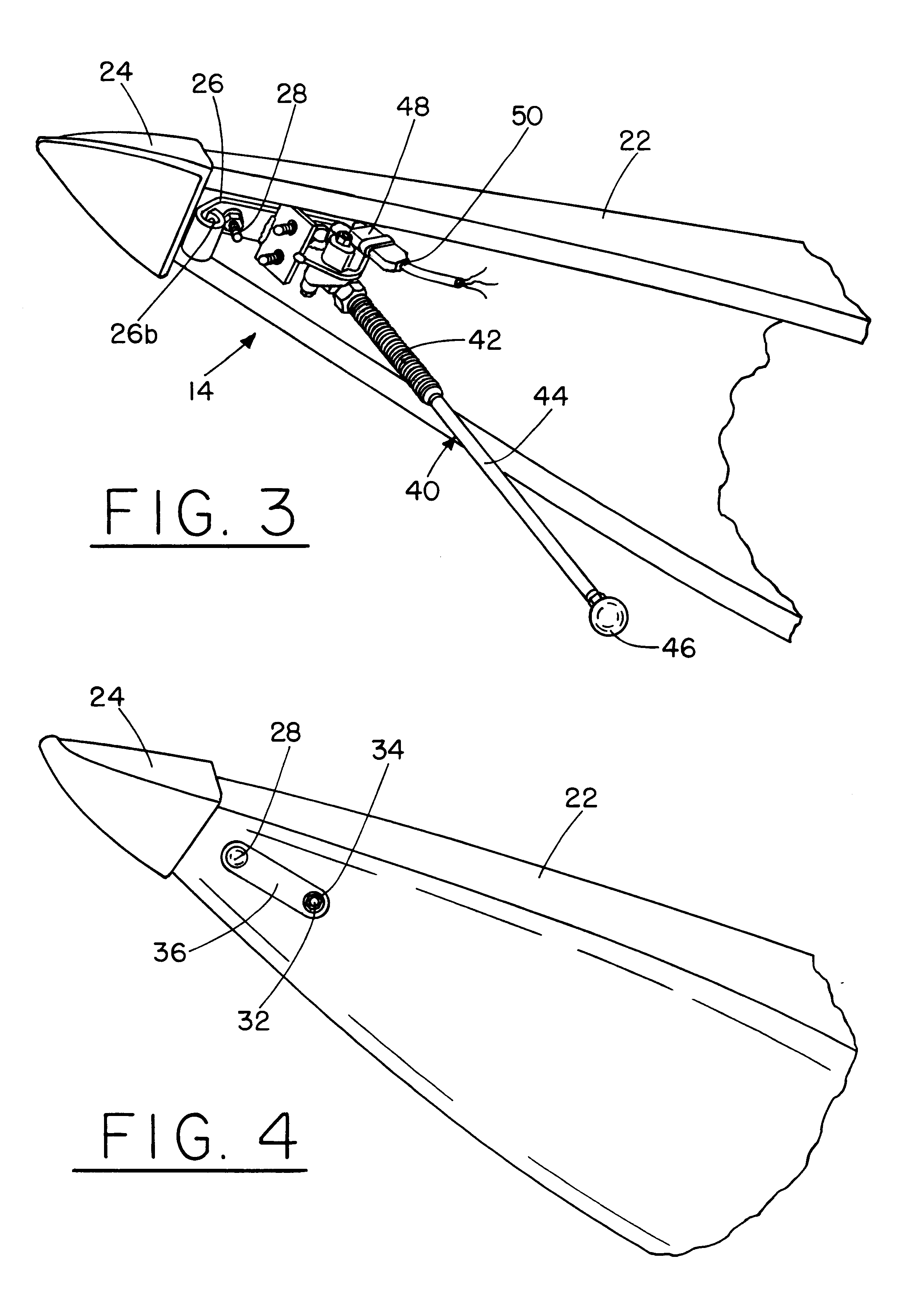Combine header height control
a technology of header height and height positioning, which is applied in the direction of adjusting devices, picking devices, agricultural tools and machines, etc., can solve the problems of increasing the possibility of header damage, reducing harvesting efficiency, and damage to the combine, so as to reduce the ingestion and impact damage of the combine, the effect of more accurate height positioning of the header and easy retrofi
- Summary
- Abstract
- Description
- Claims
- Application Information
AI Technical Summary
Benefits of technology
Problems solved by technology
Method used
Image
Examples
Embodiment Construction
Referring to FIG. 1, there is shown in simplified schematic and block diagram form a combine 10 having attached to a forward, or leading, portion thereof a corn header 12. Corn header 12 is attached to the combine 10 by conventional means such as mounting brackets and bolts (not shown for simplicity) and includes a plurality of spaced head units adapted to pass between adjacent crop rows during harvesting of the crop. Disposed on a forward portion of one or more head units is a corn head height sensor 14 in accordance with the present invention. The corn head height sensor 14 is connected by suitable electrical means to a controller interface 18 and a head controller 20 within combine 10. In response to the detected height of the corn header 12, head controller 20 provides suitable electrical control signals to an electrically actuated, hydraulic control system 38 for controlling the lateral position of the corn header 12 as well as its height above the ground, or soil, 16 as the co...
PUM
 Login to View More
Login to View More Abstract
Description
Claims
Application Information
 Login to View More
Login to View More - R&D
- Intellectual Property
- Life Sciences
- Materials
- Tech Scout
- Unparalleled Data Quality
- Higher Quality Content
- 60% Fewer Hallucinations
Browse by: Latest US Patents, China's latest patents, Technical Efficacy Thesaurus, Application Domain, Technology Topic, Popular Technical Reports.
© 2025 PatSnap. All rights reserved.Legal|Privacy policy|Modern Slavery Act Transparency Statement|Sitemap|About US| Contact US: help@patsnap.com



